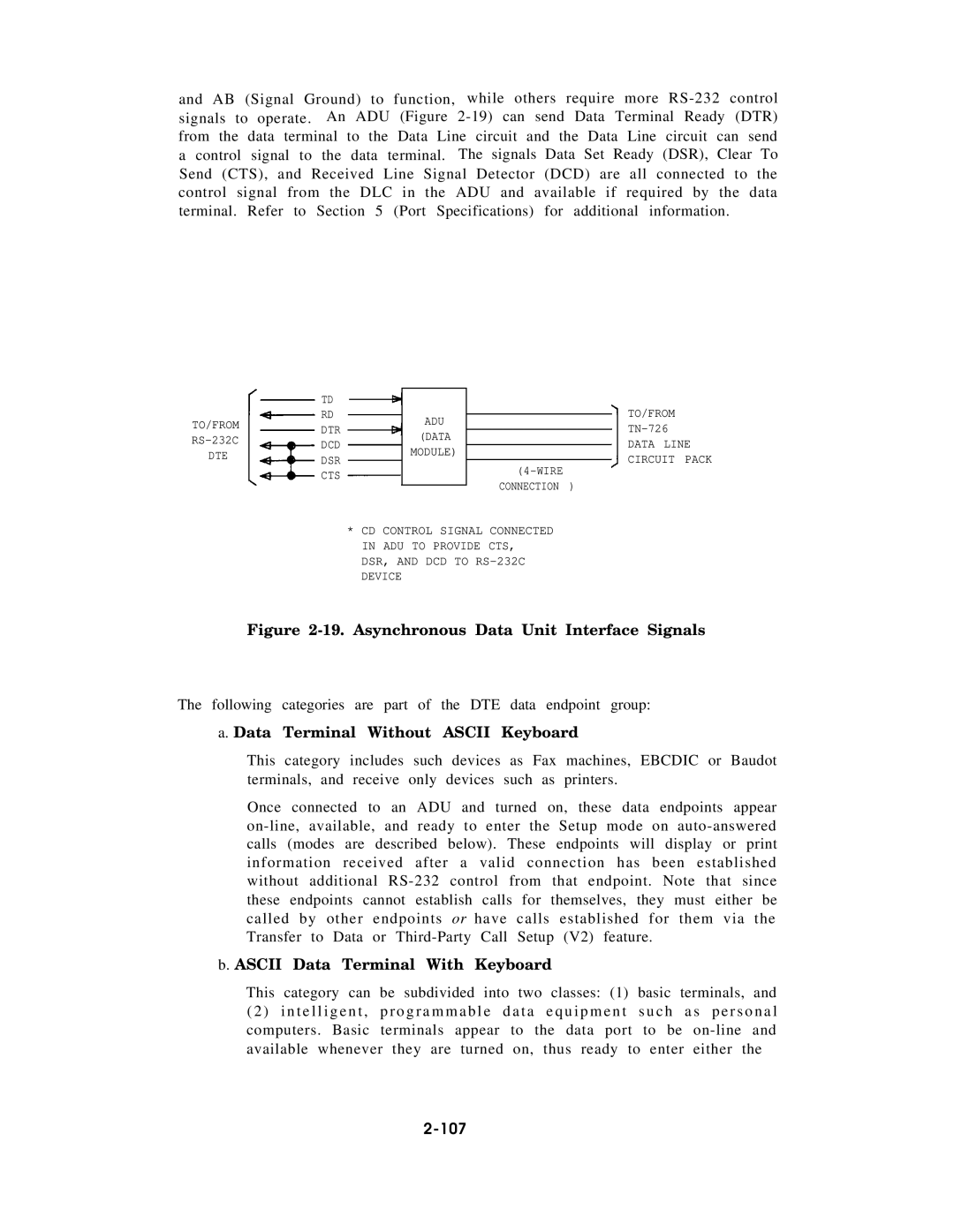
and AB (Signal Ground) to function, while others require more
|
|
| TD |
|
|
|
|
| TO/FROM | ||
|
|
|
|
|
|
|
| ||||
TO/FROM |
|
| RD |
|
| ADU |
|
| |||
|
|
|
|
|
|
| |||||
|
| DTR |
|
|
|
|
|
| |||
|
|
|
|
|
| (DATA |
|
| |||
|
| DCD |
|
|
|
|
| DATA LINE | |||
DTE |
|
|
|
| MODULE) |
|
| ||||
|
| DSR |
|
|
|
|
| CIRCUIT PACK | |||
|
|
|
|
|
|
| |||||
|
|
| CTS |
|
|
| |||||
|
|
|
| CONNECTION | ) |
| |||||
|
|
|
|
|
|
|
|
|
| ||
|
|
|
|
|
|
|
|
|
| ||
*CD CONTROL SIGNAL CONNECTED IN ADU TO PROVIDE CTS, DSR, AND DCD TO
DEVICE
Figure 2-19. Asynchronous Data Unit Interface Signals
The following categories are part of the DTE data endpoint group:
a. Data Terminal Without ASCII Keyboard
This category includes such devices as Fax machines, EBCDIC or Baudot terminals, and receive only devices such as printers.
Once connected to an ADU and turned on, these data endpoints appear
b. ASCII Data Terminal With Keyboard
This category can be subdivided into two classes: (1) basic terminals, and ( 2 ) i n t e l l i g e n t , p r o g r a m m a b l e d a t a e q u i p m e n t s u c h a s p e r s o n a l computers. Basic terminals appear to the data port to be
